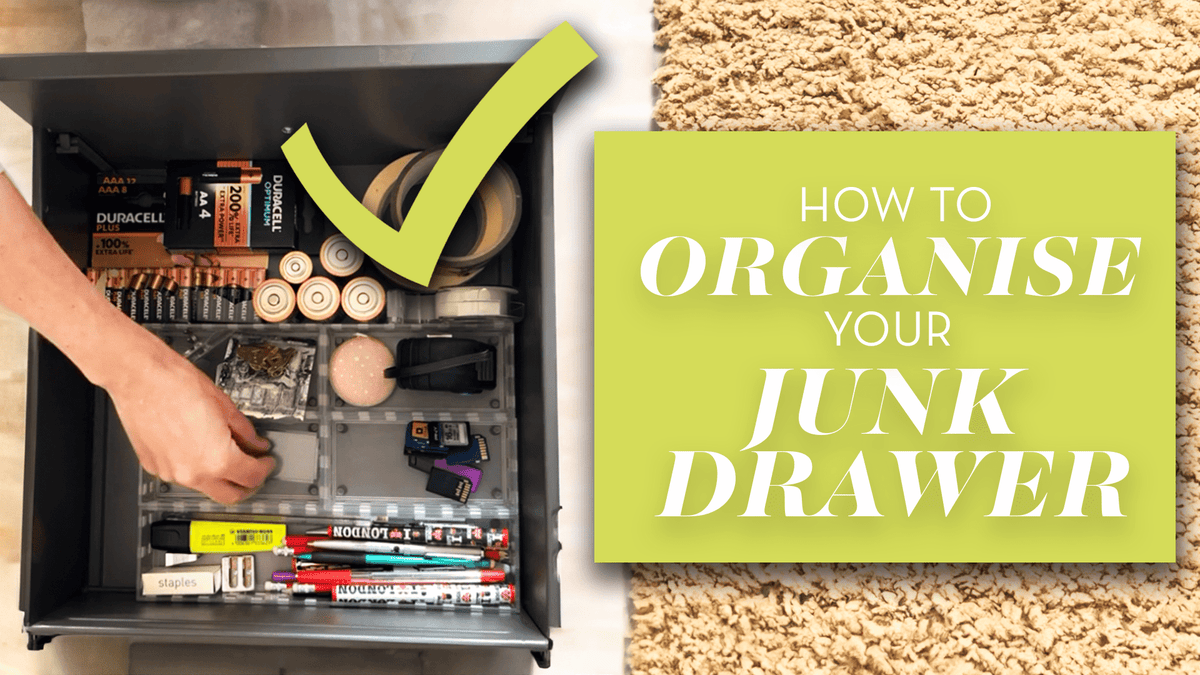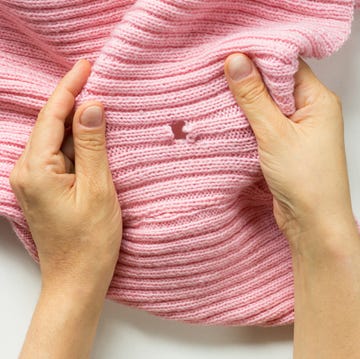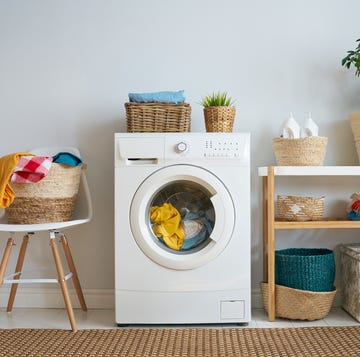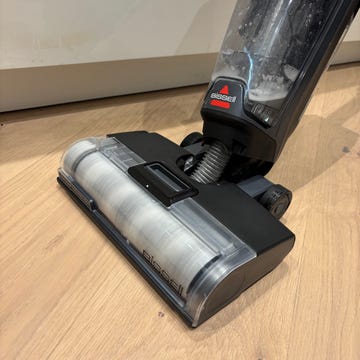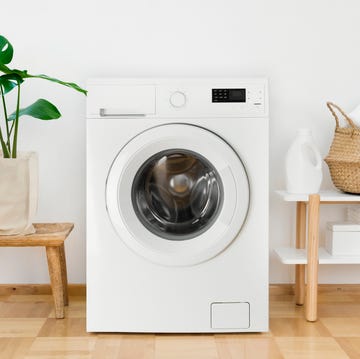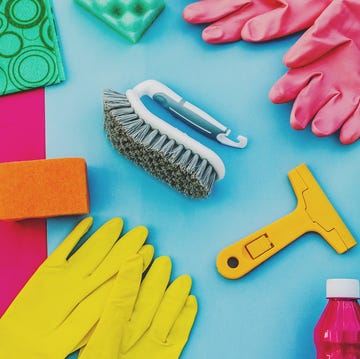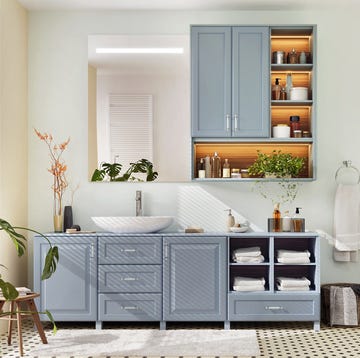We’re creatures of habit when we clean the bedroom. We pick up the floordrobe, move used cups and glasses to the dishwasher and change the sheets before we finally dust and vacuum. But this isn’t enough to really clean your bedroom.
It’s not a nice thought, but there’s several hidden dirt traps in this room that will fill with dust, lint and debris. Before you know it, you’re sleeping in close proximity to dust mite paradise – not ideal for those who suffer from allergies.
The good news is, these spaces are quick to clean – once you know where to look. We’ve rounded up some of the filthy hotspots below, so you can give your bedroom the deep clean it deserves.
1. On top of the headboard
When was the last time you cleaned your headboard? We’re sleeping directly next to it, so dust will quickly accumulate on top and it can easily go unnoticed.
Run a microfibre cloth over your headboard once a week to pick up fresh dust. If you have a fabric headboard, you can also use the upholstery attachment and a low power setting on your vacuum cleaner.
For stain removal on cotton and polycotton headboards, such as a greasy stain from the back of someone’s head, use a proprietary stain remover, such as Dr Beckmann’s Upholstery Cleaner. Alternatively, you could try using a mild detergent solution instead. For velvet, stick to blotting lightly with a detergent solution. Use cleaners as recommended by the manufacturer for suede.
2. Between the blinds
Blinds get notoriously dusty in bedrooms. If you don’t believe us, run your fingers over the surface and look at the marks you leave behind!
The trouble is, they’re not easy to clean. You need to work your way along each slat, which is awkward and time-consuming. Plus, it’s difficult to reach those at the top, and if they’re delicate, you need to be careful with the pressure you apply.
We recommend closing your blinds and then using a telescopic microfibre duster for a light dusting once a week. Always work your way from top to bottom, so you don’t apply a layer of dust to your freshly dusted slats!
A telescopic handle can help you to quickly reach the top of the blinds, although you won’t be able to apply enough pressure for a thorough clean, and cleaning the blinds while closed won’t give you complete coverage either. So, for a deeper and more detailed clean, place a cotton sock over your hand and run it between each slat, while the blinds are open.
You could also try using a low power setting along with the upholstery attachment on your vacuum cleaner – ideal for roller blinds.
3. Behind the bedside table
We all know how filthy it gets down the back of the bedside table. Between the crumbs, dust and fluff that accumulates, it can be a horrifying experience when you lose something back there! And yet, this space often goes ignored when we routinely clean the bedroom – or we just forget about it!
Furniture needs to be moved occasionally to reach the dust beneath, and the bedside table is no exception. Otherwise, such a thick layer of dust could attract no end of dust mites and take its toll on your allergies. Try to move the bedside table and give the floor a deep clean at least once every six months or so to keep on top of this dusty hotspot. You might need to do this more often if you have pets.
4. Bottom of the laundry bin
This is an unpleasant thought, but when we finally empty out the laundry bin, there’s always ‘bits’ at the bottom. It’s generally a combination of lint, crumbs and hairs that have fallen off our dirty clothes. We need not say more, but it’s not nice to think that this is gradually accumulating next to where we sleep!
Once your laundry bin is (finally) empty, take a moment to shake the residue from the bottom into your general waste bin. If you notice your laundry bin is starting to smell, you can potentially give it a wash, too. Some fabric laundry bag liners can be spot cleaned, washed by hand or even machine-washed – look for a care label to confirm. Otherwise, you can also deodorise by sprinkling some bicarb into the bottom of the laundry bin, and leaving it overnight before vacuuming it away the next day.
5. Back of the wardrobe
We never really get to see the shelves and floor of our wardrobes; they’re often brimming with clothes, which obstructs the view. But it’s important to give your wardrobe a deep clean every so often. Dust will accumulate over time, which makes the space more appealing to moths because of the dead skin cells it contains. On top of that, if there’s excess moisture in your wardrobe and a lack of ventilation, mould can grow here unnoticed, too!
Once emptied of clothes, give the surfaces a dust with a microfibre cloth. Alternatively, you could use the brush attachment on your vacuum cleaner. Mould can be removed from hard surfaces with a little distilled white vinegar (spritz it on and leave it to sit for an hour then scrub it away). Or you could use a proprietary mould remover suited to the surface. Always wear gloves, a mask and protective eyewear when treating mould.
Once fully dry and mould-free, you can use a sealed wood cleaner or multipurpose cleaner to clean the rest.
6. Under the bed
We’re prone to shove all kinds of items under the bed – it’s almost like a form of emergency storage. But the more cluttered it gets, the less likely it is to be vacuumed. Before you know it, there’s a layer of unseen dust sitting directly beneath where you sleep, attracting dust mites and triggering your allergies.
Like your bedside table, try to pull everything out from under your bed every six months or so, to give the space a thorough vacuum. If your summer or winter wardrobe is stored beneath your bed, when you make the switch, it could act as a prompt to give it a vacuum.
Organising what you store under your bed into clear containers and garment bags can help to quickly remove everything when needed. It can also help you to find items when needed.
7. In the radiator
Our radiators aren’t seeing much use at the moment, but they’re still filled with dust! While the heating is off and the radiator is cooled, grab a microfibre cloth and run it over the exterior to pick up the obvious. Then, clean the interior and back with a microfibre radiator brush. A long-handled duster could work for this, too.
Lots of dirt and dust can be dislodged by this, so be prepared to vacuum afterwards!










